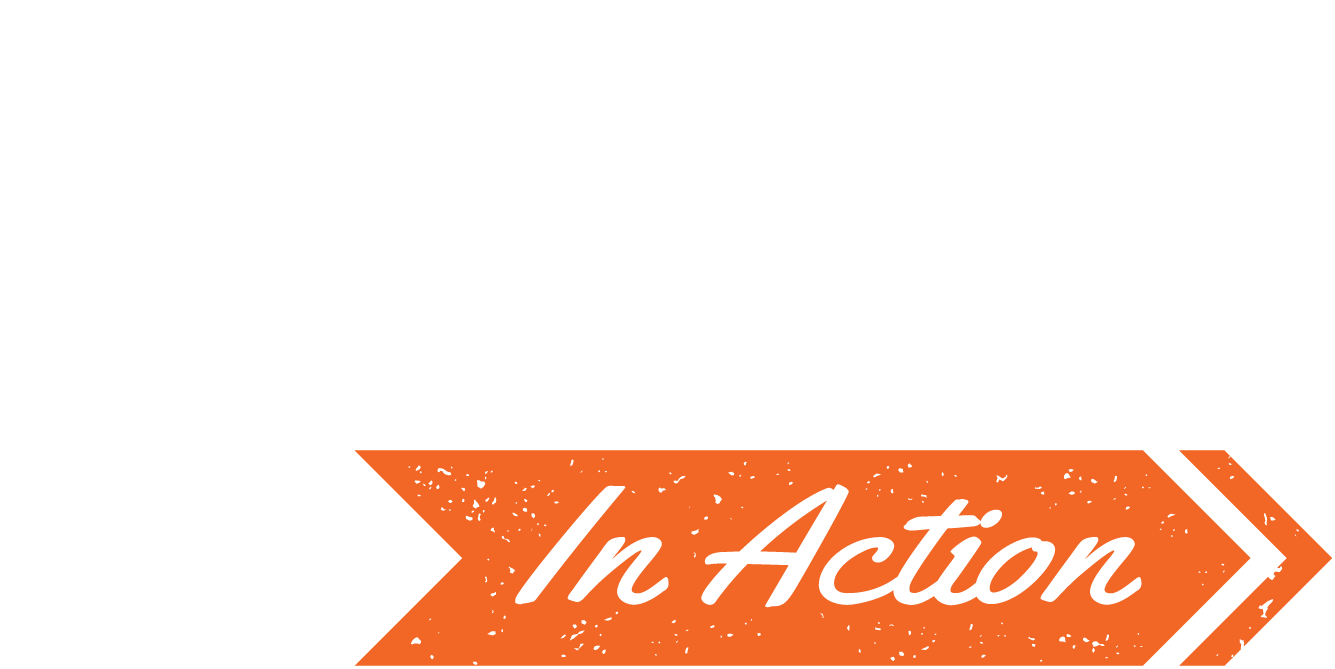- Feature
B2B businesses just getting started with ABM today have a plethora of use cases to learn from. This, in part, can be attributed to Kristen Wendel and Peter Herbert of the digital experience analytics company FullStory. The power duo tag-teamed ABM deployments at several companies during the onset of ABM’s mainstream popularity.
Learning from their own experience launching ABM programs over the years has raised them to a pioneer status in the community for helping fuel the movement in the B2B marketplace.
“Kristen and I actually have worked together at four companies over the course of … I’m not disclosing how many years,” Herbert said. “A few years back, we had the chance to start a great project at a company called VersionOne to help them move up market. Ultimately, we started doing ABM before we even realized that we were doing ABM.”
During a session at this year’s B2B Marketing Exchange, Herbert and Wendel shared their lessons learned after implementing ABM at their companies since 2015. The pair also shared a behind-the-scenes look at FullStory’s ABM initiatives and how the company took on the challenge of offering unique customer experiences to its target accounts.
“Essentially, do you want to point your laser at the part of the market that fits your ideal customer profile, or is broad-based marketing through channels where you can’t specifically target working for you?” Herbert said. “It’s possible that it does work for you, but we typically run into challenges where our inbound programs are great for small accounts but you have opportunity up market you aren’t getting to. If you’ve done your research and understand that you can get higher deal values with enterprise-level accounts, then you have to point the laser there. So, ABM is a way that you can take that spotlight, identify those accounts and market specifically to them.”
However, the pair also discussed the common misconception that ABM and demand generation do not play well together. Wendel and Herbert both noted that it is definitely possible to utilize both ABM and traditional demand gen strategies within a business to meet success.
“At FullStory, we’re doing both ABM and demand generation,” Wendel said. “We have a commercial and enterprise business and an SMB business. Our SMB business is very healthy, so marketing definitely fuels that through traditional demand gen. And there are a subset of those account that we designate as target accounts and we run ABM plays to them.”
The focus needs to be on proving success from day one, then homing in on target accounts to ensure you can provide a personalized experience for them. This has led FullStory to offer deeper, more genuine customer experiences that engage top-tier accounts.

Measurement From Day One: Utilizing Scorecards To Understand ABM Performance
Herbert and Wendel noted that one of the biggest steps to better ABM is to formulate a game plan for measuring success on day one. FullStory does this by building out scorecards designed to highlight how target accounts are progressing through the sales funnel.
“I have been doing this on a quarterly basis in Excel for four years until recently,” Herbert said. “Fortunately, we have some great tools for doing that now. We started out pretty simple; the scorecard is designed for my business because there’s no cookie cutter ABM scorecard that’s going to solve all your questions. I now spend about 90% of my time talking about account progression across the funnel, and very little time talking about MQL to SQL conversion.”
Although Herbert noted that this type of scorecard can be formulated manually, many solutions available today provide this type of functionality. FullStory now uses Engagio as an everyday, always-on source of engagement data from prospective accounts and builds a scorecard in the platform to stay up to date on funnel performance. FullStory also uses tools like Looker to formulate insights from multiple sources on pipeline, revenue, velocity, renewal, retention and more.
“Every cohort (tier of accounts) has a funnel,” Herbert said. “Now I can add up and see every day how many opportunities we have converted in the pipeline. It’s a big difference from what I was doing a few years ago.”
Both Wendel and Herbert noted that it’s vital to also do your “funnel math” before putting your ABM programs into the field. This can ultimately better position ABM practitioners to formulate a scorecard that highlights all the key information their businesses need to understand program performance.
This can be done by:
- Identifying key data points, such as revenue goals, conversion baselines, ACV baselines and sales cycle velocity;
- Using that information to understand how much revenue your business should expect the ABM program to create;
- Formulating how much pipeline should be created by your ABM initiatives to meet that revenue goal;
- Researching your baselines as best you can to watch how ABM increases conversion rates at the total amount of pipeline generated; and
- Calculating how many accounts you need to work to get the results your business requires.
ADVERTISEMENT
“We kicked off our ABM program with two cohorts and we measured the progress of those accounts over a three-month period, Wendel said. “We saw an immediate spike in engagement as soon as we started running plays. Once we could prove it was working, we began adding additional cohorts.”
Taking A FIRE Approach To Data-Driven Targeted Account Selection
FullStory targets a $10 billion market, which requires the company to get specific in exactly which accounts they are targeting and investing marketing budget towards.
 “Finding your total addressable market is a really important exercise for any business, but that’s not the same thing as a target market,” Herbert said. “You need to develop your ideal customer profile and then use data to get more selective.”
“Finding your total addressable market is a really important exercise for any business, but that’s not the same thing as a target market,” Herbert said. “You need to develop your ideal customer profile and then use data to get more selective.”
To accomplish this, FullStory adopted the FIRE methodology to further refine its total addressable market down a workable list of accounts that have the highest propensity to buy. Using solutions such as EverString, Bombora and Engagio, the company assesses its total addressable market for:
- Fit: All the accounts that fit the company’s ideal customer profile and are obtainable;
- Intent: Accounts that are actively in-market and exploring the company’s category;
- Recency: Accounts that have recently shown buying intent, whether it be through first- or third-party buying signals; and
- Engagement: Accounts that are in-market and engaged with your campaigns, content and people.
ADVERTISEMENT
With FIRE, FullStory is positioned to better select a pool of target accounts, activate those accounts on an annual, quarterly or monthly basis, prioritize target accounts in real-time and create personalized experiences based on that engagement.
“So, if an account is showing good fit based on the models that we’ve built, and if they’re showing intent, I don’t really need to know whether there’s engagement or not — I know I need to activate that account,” Wendel said. “It’s an automated machine we have running. Then it’s about delivering those insights to sales and marketing so they can have context and create those personal experiences.”
Prioritize Experience Over Content
When it comes to target accounts, Wendel and Herbert noted that it’s more important to think about the customer experience versus the content. While there is always a place for content in B2B marketing, tactics such as personal dinners, personalized direct mail and targeted social from key influencers in the company can differentiate a brand from the crowd.
“There’s really no substitution for content,” Wendel said. “But when you go up market, or when you’re going after Fortune 500 accounts, they’re not going to listen to noise. You have to say something that will pique their interest.
“We like to differentiate by creating gifts that are very personalized,” Wendel continued. “For example, when someone sits on a demo with us from a target account, we send them socks and have a little note that says, ‘We hope that our little story blew your socks off. And just in case we did, here’s a new pair.’ You have to make it feel like you’re sellin g just to them, and that you care about their business.”
g just to them, and that you care about their business.”
FullStory’s content creation process is streamlined to better position the marketing team to further personalize as needed. Wendel noted that FullStory builds content based on their target personas, then customizes that content by segment as needed. FullStory can then deliver that content in one-to-one experiences such as content hubs through Uberflip.
“It’s difficult because there’s no automation for writing good content,” Wendel said. “It’s really hard to produce that content, and then to personalize it for your different audiences and lines of business. But we tried to make it as simple as possible, especially with tactics like direct mail that can be automated. So, when a demo happens and an alert fires out, it goes into our own direct mail system and then it fires off without so much human intervention.”
Ultimately, having the ability to tweak messaging slightly for persona-specific pain points into the content production workflow better positions marketing to understand what resonates with target accounts. Leveraging those engagement trends leads to more positive customer experiences in the long term.
“The way I looked at ABM in the beginning was a really agile process,” Herbert said. “I always say that we kind of took the plane off without any landing gear — we didn’t even know if we had wings or not. We just started doing stuff, and we kept going. So, if you try one channel, and it’s not really working, flip it over. Try to do things that are flexible and can be adapted as you learn — don’t just go all in.”
ADVERTISEMENT
FullStory's Tech Stack
Continue Reading

Follow Us On
© 2025 Emerald X, LLC. All Rights Reserved



